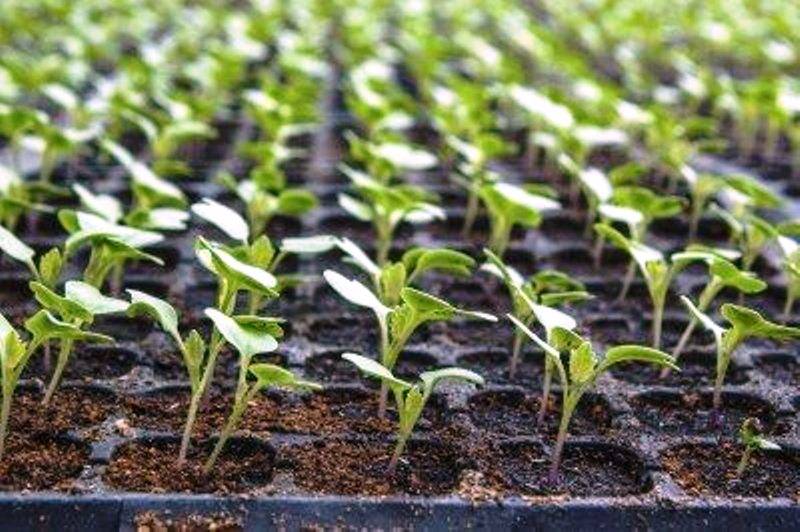
Cauliflower is one of the most important and popular winter vegetables and plays an important role in Indian agriculture. It’s an amazing vegetable which plays an important role in the human diet for high nutritional value and with added taste. Indian farmers and agriculture market deeply rely on this vegetable. However, cauliflower has a European origin.
In India, cauliflower cultivation is done almost in all the states, but mainly states like Bihar, U. P., Orissa, Assam, M.P., Gujarat, and Haryana has major production. The scientific name of cauliflower is Brassica oleracea var botrytis and it has achieved importance as one of the important and popular vegetables not only in India but in various parts of the world.
As per research, it is found that cauliflower belongs to the family of Cruciferous and it works as an anti-cancer agent. It promotes heart health, lower cholesterol levels. It is a rich source of protein, carbohydrates, vitamin-B, and C as well as various minerals which are necessary for human health. Cauliflower is grown for its edible flowering head and consume as a vegetable in curries, soups, and pickles.
In this article, we will discuss how you can easily grow cauliflower in your kitchen garden, the soil requirements for more production and how to transplant it.

Climate Requirements for cauliflower cultivation
Cauliflower is a cool-season vegetable. So it produces in the cool and slightly moist climate condition.
The optimum monthly average temperature ranges from 15 to 20 °C. The early varieties require higher temperatures and longer day length.
So we prefer it to cultivate during the winter season or autumn-winter season.
Know the Soil Requirement-
Cauliflower cultivated on any good soil from clay to loamy, but the fairly deep loamy soil is most desirable. Soils with high moisture- holding capacity are preferred in late season/summer since water stress adversely affects curd development.
In the rainy season, soils that dry rapidly are preferred so that the cultural and harvesting operations can be done easily.
It is quite sensitive to high acidity, and the optimum soil pH for maximum production is 5.5 to 6.0.
Cauliflower is moderately sensitive to salinity in soil and water. It is more tolerant to salinity than lettuce but somewhat less tolerant to salinity than broccoli. Hence water with EC of 1.3 or less can be used for irrigation.
What is the proper Sowing Time? Spacing? Method?
The best time of seed sowing in the nursery depending upon climate, varieties and their temperature requirement for curd formation. For early season variety June-July is best transplanting time, For main season variety, August to mid-September and October to the first week of November is best transplanting for late varieties.
The cauliflower varieties are grouped under three categories. This is the early season, main season and late-season varieties.
Early-season varieties are sown from May to August and ready to harvest from September to December. Main season varieties are sown from September to October and are ready for harvest from December to January, while late-season varieties are sown from October to December and harvested from mid-January to April end.
Spacing
Use spacing of 45x45 cm for main season crop whereas for early and late maturing crop use spacing of 45x30 cm.
Sowing Depth
It is preferred to sow seeds at the depth of 1-2 cm.
Method of sowing
For Sowing dibbling method and transplanting methods can be used.
Sow seeds in the nursery and apply irrigation, fertilizer dose as per requirement. Seedlings are ready to transplant within 25-30 days after sowing. For transplantation use three to four weeks old seedlings.
Know the Varieties of Cauliflower-
-
Early season – Early kunwar, Early Synthetic,Pusa Katki, Pant Gobhi-2, Pant Gobhi-3,
-
Main season -Pusa Synthetic, Pant Shubhra, Punjab Giant-26, Punjab Giant-35
-
late-season– Pusa Snowball-1, Pusa Snowball-2, Sonwball-16, Dania Kalimpong

Seed Requirements-
For cauliflower cultivation in an Early season: 600g-750 gm/ ha, Mid and late season: 400-500 gm/ha seed required.
Nursery for cauliflower cultivation:
Make Nursery beds with one meter wide and fifteen cm in hight.
After that drench fungicide like Captan or Thiram at the rate 2 g/l of water to prevent the incidence of fungal diseases.
The seeds should be sown in lines at a spacing of 8-10 cm between rows and 1.5-2 cm between seeds at a depth of 1.5-2 cm. The seed should be covered with sand and FYM mixture.
Sowing of seed should be done at a distance 8 to 10 centimeters between seedlings and 1.5-2 cm in the rows. Seeds should be covered with soil and FYM mixture.
During the monsoon, nurseries should be created under polyhouse or polytunnel. Weeding and intercultural operation should be time to time. Nursery beds should always be irrigated according to need.
How to Transplant?
The seedlings become ready for transplanting after 4 to 5 weeks.
During planting, the distance between the two plants depends upon the fertility of the soil, Cultivation season and the market demand.
Generally for early season distance between plant to plant is 45 cm X 45 cm and for main season and late-season crop, 60 cm X 60 cm maintained. In the market, the demand for small and medium-size Cauliflower is generally high; Therefore, by reducing planting distance, more Cauliflower curds can be obtained.
An expert cauliflower farmer achieves this result by planting Cauliflower crop at the row to raw 45 cm and plant to plant at 30 cm and you deep irrigation method for improving cauliflower yield.
What and how to use Manure and fertilizer?
The requirements of manure and fertilizer for cauliflower crop are depended upon the fertility of the Soil. To determine the fertility of the soil, soil testing must be carried out before start cauliflower farming.
Before transplanting cauliflower crop add 150-200 q/ha farmyard manure apply in the soil and mix thoroughly in the field.
Generally, the cauliflower crop is required to give 200 kg of Nitrogen, 75 kg of phosphorus and 75 kg potassium per hectare for optimum yield.
Nitrogen 100 kg, 75 kg phosphorus and 75 kg potash should be applied at the time of transplanting. The remaining half of nitrogen should be given 30 and 45 days after transplanting.
Harvesting of cauliflower
Cauliflower crop is ready for harvest 90-120 days after planting.
The full white-colored matured cauliflower should be a harvest for sale immediately. If the harvesting is delayed, then the color of the curds is becoming yellowish, and its thickness and charm disappear. Therefore it is very important to remove the cauliflower at the right maturity time.
Cut stalk below to the curd with a knife. Grading should be made according to the color and size and market demand.
Normal temperature cauliflower can be stored for 3 to 4 days and below to 0 with 85 to 90% humidity in 30 days.
Yield of cauliflower
Cauliflower yield depends upon production season and breed varieties. For early varieties, approximately 6-10 t/ha is obtained while Midseason varieties, yield 12-20 t/ha and for late variety, types are 20-30 t/ha obtain
Recommended Varieties
-
‘Snowball’, which produces medium heads and a good yield throughout the growing season.
-
‘Orange’, which has a similar taste to the white cauliflower, but has more vitamin A.
















